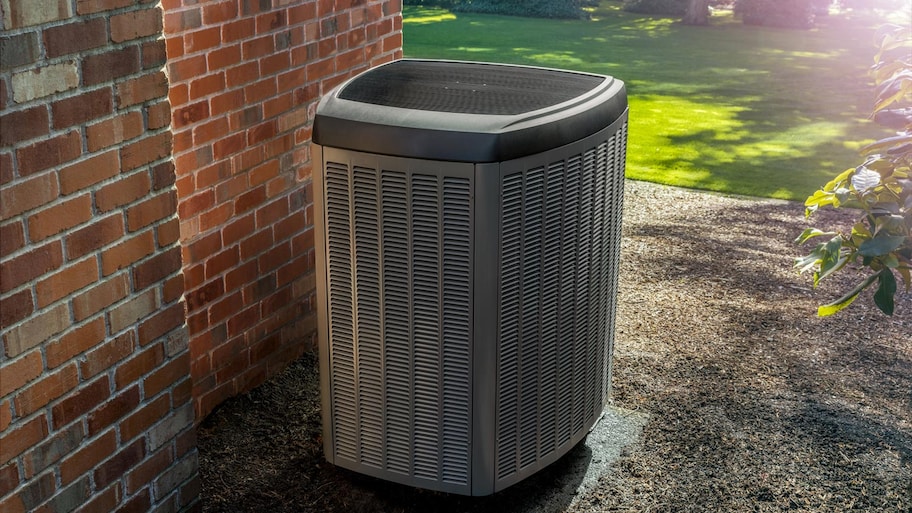Highlights
The size of your home’s AC unit is based on a Manual J calculation, which measures square footage, number of windows, insulation, and other factors.
AC units are measured by BTUs or tonnage.
To cool your home, you can choose between window units or central air.
While picking out an air conditioner for your home may seem pretty straightforward, there are many factors that you need to consider to nail down exactly what size you need. The most basic details you’ll need for an exact calculation include the size of your home, adequacy of your insulation, and the climate where you live. Here’s a breakdown of the details that factor into what size AC unit you’ll need for your home.
What is a BTU (and Why Do I Care)?
If you’ve been looking into AC units, you’ve probably come across the acronym BTU. BTU stands for British thermal units, and it’s essentially a measure of a quantity of heat. There are 12,000 BTUs per one ton of AC capacity.
Air conditioning units remove BTUs from the atmosphere. For example, if you see an air conditioning unit rated for two tons, it can remove 24,000 BTUs from the air. More tonnage equals a higher rating, which indicates a larger cooling capacity.
Suggested Sizes of AC Units
Here’s a look at the appropriate tonnage and BTUs based on square footage. These exact figures may vary based on the results of your Manual J calculation.
| Home Square Footage | AC Tonnage | BTUs |
|---|---|---|
| 400–500 | 1 ton | 10,000–12,000 |
| 500–1,000 | 1.5 tons | 14,000–18,000 |
| 1,000–1,500 | 2 tons | 21,000–24,000 |
| 1,500–2,000 | 2.5 tons | 30,000 |
| 2,000–2,500 | 3 tons | 34,000 |
| 2,500–2,700 | 4 tons | 48,000 |
| 2,700–3,300 | 5 tons | 60,000 |
How Do I Calculate the Size of My Ideal AC Unit?

When you hire an HVAC professional near you, they will likely conduct a Manual J calculation to determine the size of the unit necessary to cool your home. While it’s a complicated calculation, the Manual J calculation takes the following factors into account.
Square Footage
Your home’s square footage is one of the primary factors you should consider when thinking about the size of your AC unit. If your home has higher square footage, it will need a higher tonnage AC unit to remove more BTUs. The Manual J calculation also requires you to provide the number of heat-generating appliances in the home, which tend to increase with square footage.
Climate Zone
According to Energy.gov, the United States has five climate zones, defined by the temperature and humidity of each climate. The hotter and more humid your location’s climate, the higher the tonnage needed to power an air conditioner and cool your home.
Ductwork
The Manual J calculation also takes the age and condition of your ductwork into account. If your ducts are older or are in poor condition, they won’t work as efficiently as newer ones in better condition.
Windows
The size and efficiency of your windows matters when figuring out what size AC unit you’ll need. If your windows don’t do a good job of preventing air leaks, that will put a higher strain on your HVAC unit. You can expect HVAC professionals to ask you to provide the number of windows in your home and whether they’re newer double-paned models or older single-paned models.
Natural Sunlight or Shade
Where your home sits in relation to the sun affects how hard your AC unit has to work to cool the house. The more shade you have over your home, the easier it is to keep the home from heating to uncomfortable temperatures.
Insulation
Insulation is a big factor in determining how efficiently your AC unit runs and the cost of your utility bills. If you run your air conditioner but your home isn’t well-insulated, the cold air will escape much faster, causing your system to work harder and drive up your energy bills.
Number of People in the Home
Yes, body heat plays a role in the Manual J calculation. Humans produce a lot of heat, and the more people you have moving around your home, the harder your system has to work to cool it down.
Ceiling Height
The height of your ceilings also factors into the Manual J calculation. Homes with higher ceilings are more difficult to cool because there’s more area for the air to circulate through.
Window Unit vs. Central AC Unit
If you’re only looking to cool a room or two, then window AC units or mini-split systems will suffice. But if you need to cool the whole home, the central AC system will be a better investment in the long run, even though it has higher upfront costs. Installing a central air conditioning unit costs between $3,800 to $7,500 on average, but the maintenance costs and the utility bills will be lower over the life of the unit versus buying several window air conditioners.





